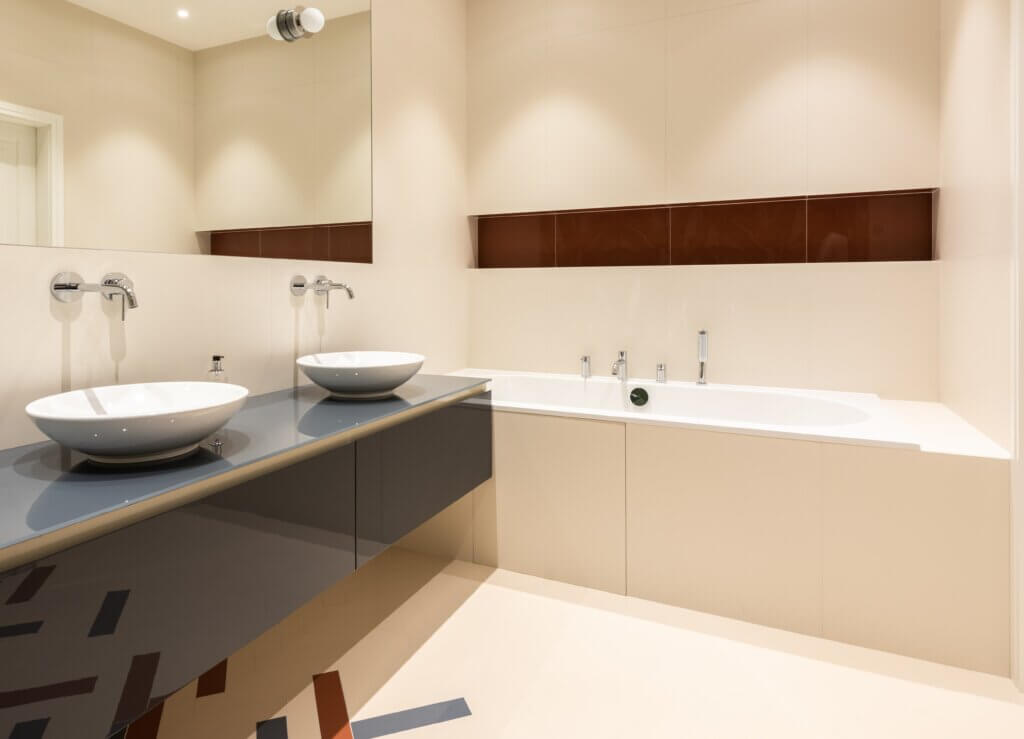5 Steps Applying Microcement : The Ultimate Guide
Step 1: Surface Preparation
You must ensure that the surface has been adequately prepared before adding microcement. A requirement is this. By doing this, the application will be assured of being successful and will continue to operate properly for a considerable amount of time. The following actions must be taken in order to prepare the surface for use:
Clean the surface: To get rid of any dust, dirt, or debris that could be on the surface, it is advised that the surface be cleaned using a vacuum cleaner or a broom.

Repair cracks and imperfections: After applying an appropriate filler or repair solution to the surface, fill in any fractures or faults that you uncover. Inspect the surface to ensure there are no bumps or uneven places.
Prime the surface: Apply a primer to the surface to enhance adhesion between the microcement and the substrate. Allow the primer to dry completely before proceeding to the next step.
Step 2: Base Coat Application
It is done by spraying the microcement directly into the base coat, which acts as the procedure’s substrate. To guarantee proper application of the base coat, ensure that the following procedures are followed:
Mix the microcement: Mix the microcement: Following the manufacturer’s instructions, combine the water and the microcement in such a way that the resulting consistency is lump-free and as smooth as silk.
Apply the base coat: After preparing the surface with a steel trowel, apply a base layer of microcement to the surface with an applicator. Spread it out evenly, making sure that the consistency is maintained throughout. To ensure that all layers are the same size, use a straightedge or a trowel with notches cut into it to measure the thickness of each layer.

Allow the base coat to dry: Before proceeding to the next step, ensure that the base coat has had enough time to dry completely according to the manufacturer’s instructions. This could take anywhere from a few hours to a few days, depending on the temperature and humidity of the surrounding environment. This time frame varies greatly.
Step 3: Intermediate Coat Application
The intermediate coat adds dimension and texture to the surface of the microcement. Follow these steps to properly apply the intermediate coat:
Mix the microcement: Make a new batch of microcement for the intermediate coat, according to the manufacturer’s instructions.
Apply the intermediate coat: Apply the intermediate coat to the dried base coat with a trowel or a stainless-steel spatula. Working in small sections, evenly spread the microcement and blend it with the base coat to create a smooth transition.
Texture the surface: Create the desired texture on the surface with a trowel, sponge, or other texturing tools. Experiment with various techniques to achieve the desired result.

Step 4: Top Coat Application
The final layer of protection and an enhancement to the microcement’s aesthetic appeal are both provided by the top coat. To apply the top coat correctly, follow these steps:
Mix the microcement: Prepare the microcement by preparing a new batch of microcement for the top coat in accordance with the instructions provided by the manufacturer.
Apply the top coat: After the intermediate coat has completely dried, apply the top coat onto it using a trowel or a spatula made of stainless steel. Spread it out evenly to ensure that the consistency remains the same. As you go, make sure to smooth out any imperfections or air bubbles.
After applying the final coat, use a steel float or a trowel to create a smooth surface that is polished to a mirror finish. This is the finishing touch. It is important to pay attention to the details and edges in order to achieve a seamless finish.

Step 5: Sealing and Protection
It is absolutely necessary to seal the surface of the microcement in order to protect it from stains, moisture, and the general wear and tear of daily use. To effectively seal and safeguard the microcement, proceed as follows:
Allow the microcement to cure: It is absolutely necessary to seal the surface of the microcement in order to protect it from stains, moisture, and the general wear and tear of daily use. To effectively seal and safeguard the microcement, proceed as follows
Apply the sealer: Select a high-quality sealer appropriate for microcement and follow the manufacturer’s instructions. To ensure even coverage, use a roller or a brush. If necessary, apply multiple coats, allowing sufficient drying time between each coat. The sealer will form a protective barrier on the surface of the microcement, increasing its durability and resistance to stains and moisture.
Maintain proper ventilation: Ensure that the room is well-ventilated during the sealing process to allow proper airflow. This will help the sealer dry and cure faster, while also reducing any potential fumes or odors.
Prevent foot traffic and heavy items: It is critical to prevent walking on the surface or putting heavy things on it while the sealer is curing. This might cause the curing process to be disrupted, resulting in uneven sealing or damage to the microcement.
Regular care and cleaning: Once the microcement has been sealed, it is essential to maintain and clean it properly in order to keep its aesthetic and lifetime. Use moderate, pH-neutral cleansers formulated exclusively for sealed microcement surfaces. Avoid using abrasive or acidic cleansers, which might harm the sealer.

Periodic resealing: Foot traffic and other factors may erode the protective layer of the microcement. Regularly resealing the surface maintains and extends its life. The frequency of resealing is determined by use and manufacturer specifications.
Contact with experts: If you are confused about the sealing process or want to secure the best results, it is always a good idea to contact with experts or experienced microcement installers. They can provide professional advice and help on the particular sealing materials and processes that are appropriate for your microcement flooring.
By following these steps, you can effectively seal and protect your microcement surface, extending its lifespan and maintaining its aesthetic appeal. Proper sealing is crucial to enhance the durability, resistance, and longevity of your microcement flooring.

We have a team of qualified specialists at Sydney Flooring Experts that specialize in microcement flooring installation and maintenance. Our professionals can walk you through the whole process, from surface preparation to sealing, delivering a faultless and long-lasting outcome. Contact us now to find out more about our microcement services and how we can help you alter your area with this adaptable and fashionable flooring solution.
